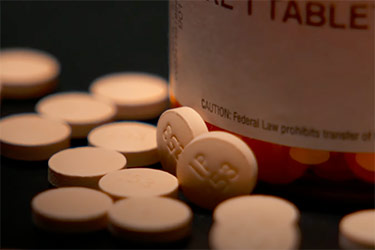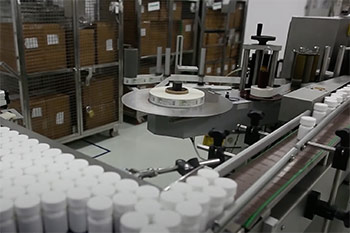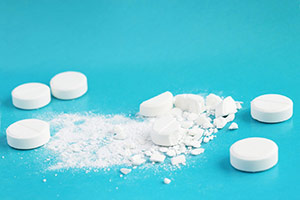Zantac Lawsuits
Did you take Zantac and later develop cancer? You may be eligible for significant compensation.
 The over-the-counter drug ranitidine (known by brand-name Zantac) has been found to contain cancer-causing toxins. On April 11, 2020, the FDA announced its request for manufacturers to withdraw all ranitidine (Zantac) products from the market, as they had determined that ranitidine’s levels of the organic compound NDMA (N-Nitrosodimethylamine) were harmful. The manufacturers of Zantac, including but not limted to multinational pharmaceutical company Sanofi, are alleged to have been aware of the cancer risks, yet marketed and sold the drug anyway. Zantac lawsuits are currently developing throughout the United States to hold these companies accountable for the misconduct.
The over-the-counter drug ranitidine (known by brand-name Zantac) has been found to contain cancer-causing toxins. On April 11, 2020, the FDA announced its request for manufacturers to withdraw all ranitidine (Zantac) products from the market, as they had determined that ranitidine’s levels of the organic compound NDMA (N-Nitrosodimethylamine) were harmful. The manufacturers of Zantac, including but not limted to multinational pharmaceutical company Sanofi, are alleged to have been aware of the cancer risks, yet marketed and sold the drug anyway. Zantac lawsuits are currently developing throughout the United States to hold these companies accountable for the misconduct.
Why was Zantac prescribed and used?
First discovered in England in 1976 and coming into commercial use in 1981, ranitidine is included on the World Health Organization’s List of Essential Medicines and, as recently as 2017, was the 48th-most commonly prescribed medication in the United States with over 16 million prescriptions.
Ranitidine was sold most popularly under the brand name Zantac. A hugely popular drug, Zantac is an antacid that decreases stomach acid production, and was prescribed and used to treat digestive issues such as peptic ulcer disease and gastroesophageal reflux disease. It could be obtained over the counter to treat occasional heartburn, or could be prescribed to treat more serious digestive issues. Ranitidine was prescribed in three increasing dosages, 75mg, 150mg and 300mg. When prescribed to treat heartburn, the medication was most commonly taken once or twice per day. The fact that ranitidine was available over the counter indicates the medication’s short course of treatment, typically a 14-day prescription to relieve heartburn. If further treatment is necessary, a patient would need to pursue more serious treatment.
Ranitidine is classified as a histamine-2 (H2) blocker, which functions by reducing the amount of gastric acid in the stomach. Histamine is an organic nitrogenous compound involved in local immune responses, as well as in regulating physiological functions in the gut and in encouraging the stomach to produce acid to aid in digestion. Using an H2 blocker will reduce the amount of histamine produced by the body, which, in turn, reduces the amount of stomach acid produced.
Zantac Linked to Cancer by FDA
 On April 1st, 2020, the FDA announced its request for manufacturers to immediately withdraw all prescription and over-the-counter ranitidine products from the market. This measure was taken over growing concern and an ongoing investigation into the presence of the contaminant N-Nitrosodimethylamine (NDMA) in harmful amounts. The FDA had determined that the NDMA “impurity” in some ranitidine products was increasing over time, especially when stored at higher than room temperature. This growth would create consumer exposure to dangerous levels of the toxin.
On April 1st, 2020, the FDA announced its request for manufacturers to immediately withdraw all prescription and over-the-counter ranitidine products from the market. This measure was taken over growing concern and an ongoing investigation into the presence of the contaminant N-Nitrosodimethylamine (NDMA) in harmful amounts. The FDA had determined that the NDMA “impurity” in some ranitidine products was increasing over time, especially when stored at higher than room temperature. This growth would create consumer exposure to dangerous levels of the toxin.
NDMA is classified as a “probable human carcinogen,” meaning it could potentially cause cancer when consumed. The FDA was lead to this recall by independent testing that took place in the summer of 2019 by the pharmacy Valisure, which first found extremely high levels of NDMA in ranitidine, across many different manufacturers and dosages. The FDA has previously designated no more than 96 nanograms of NDMA a day a negligible level of consumption. According to Valisure’s lab testing, they found some Zantac formulas to contain more than 3,000,000 nanograms per tablet.
When the FDA conducted their own tests, they found “low levels” that were, at the time, not significant enough to warrant a recall, but they issued a warning in September 2019 recommending individuals seek alternative treatment. Not until more third-party laboratory testing discovered that the toxicity increases over time was the recall issued. At the time of the recall, it was believed that the amount of NDMA in ranitidine was increasing at all times and all temperatures, but that it was rapidly increasing in the higher temperatures it was likely exposed to during distribution and handling by consumers. The testing also showed that the older a ranitidine product is, or the longer the length of time since it was manufactured, the greater the level of NDMA. While negligible amounts of NDMA are consumed daily, these conditions may raise the level of NDMA in the ranitidine product above the acceptable daily intake limit.
Harmful Effects of NDMA Carcinogen in Zantac
NDMA is a probable carcinogen, meaning exposure could significantly increase cancer risk. Users of ranitidine who have filed lawsuits report a wide variety of cancers. According to representing attorneys, these individuals have no family history or genetic markers for cancer, and have instead been told by doctors that their cancers have been caused by something from their environment.
Cancers that have been linked to ranitidine so far include but are not limited to the following:
- Bladder Cancer
- Breast Cancer
- Colon Cancer
- Esophageal Cancer
- Kidney Cancer
- Liver Cancer
- Melanoma
- Ovarian Cancer
- Prostate Cancer
- Stomach Cancer
Zantac Lawsuits Developing Throughout the United States
 In current and ongoing lawsuits regarding Zantac and ranitidine, a central claim is that defendants failed to appropriately alert the users of their drugs of the potential risks involved. They also argue that ranitidine is unstable; it can form NDMA simply by being exposed to normal stomach conditions, or by the ingestion of the substance nitrite found in meats and preserved foods. Lawsuits also allege that drug manufacturers have been aware of the possible formation of NDMA when taking ranitidine as far back as 1981. More recent studies find the same thing; in 2011, Ruqiao Shen and Susan A. Andrews found that ranitidine could form NDMA when exposed to chlorine-disinfected drinking water. A study by Stanford University supports a link between ranitidine and cancer. The researchers tested urine samples from adult volunteers 24 hours before and after ingestion of a standard dose of 150 mg of ranitidine. They found that levels of NDMA in the urine increased 400-fold, from 110 ng to 47,600 ng. These levels, the authors wrote, severely underestimate the actual NDMA exposure in the body, since only a small fraction of the NDMA is actually excreted in the urine.
In current and ongoing lawsuits regarding Zantac and ranitidine, a central claim is that defendants failed to appropriately alert the users of their drugs of the potential risks involved. They also argue that ranitidine is unstable; it can form NDMA simply by being exposed to normal stomach conditions, or by the ingestion of the substance nitrite found in meats and preserved foods. Lawsuits also allege that drug manufacturers have been aware of the possible formation of NDMA when taking ranitidine as far back as 1981. More recent studies find the same thing; in 2011, Ruqiao Shen and Susan A. Andrews found that ranitidine could form NDMA when exposed to chlorine-disinfected drinking water. A study by Stanford University supports a link between ranitidine and cancer. The researchers tested urine samples from adult volunteers 24 hours before and after ingestion of a standard dose of 150 mg of ranitidine. They found that levels of NDMA in the urine increased 400-fold, from 110 ng to 47,600 ng. These levels, the authors wrote, severely underestimate the actual NDMA exposure in the body, since only a small fraction of the NDMA is actually excreted in the urine.
All current plaintiffs in these cases are qualified by the following conditions: a proven use of a ranitidine product, a cancer diagnosis, and a connection between the diagnosis and the use of the drug. However, claims must be properly evaluated by an attorney.
Possibly developed cancer from Zantac?
At Keefe Law Firm, our highly successful attorneys are dedicated to providing the best possible representation and advocacy for clients. Our lawyers are currently developing Zantac cancer lawsuits throughout the country, and are ready to speak about your claim today. Contact us online or call our office for a free consultation.
